Cultural Icon of Jiangsu: Yancheng's Yellow Sea Wetlands
An Ecological Poem Penned Across the Tidal Flats
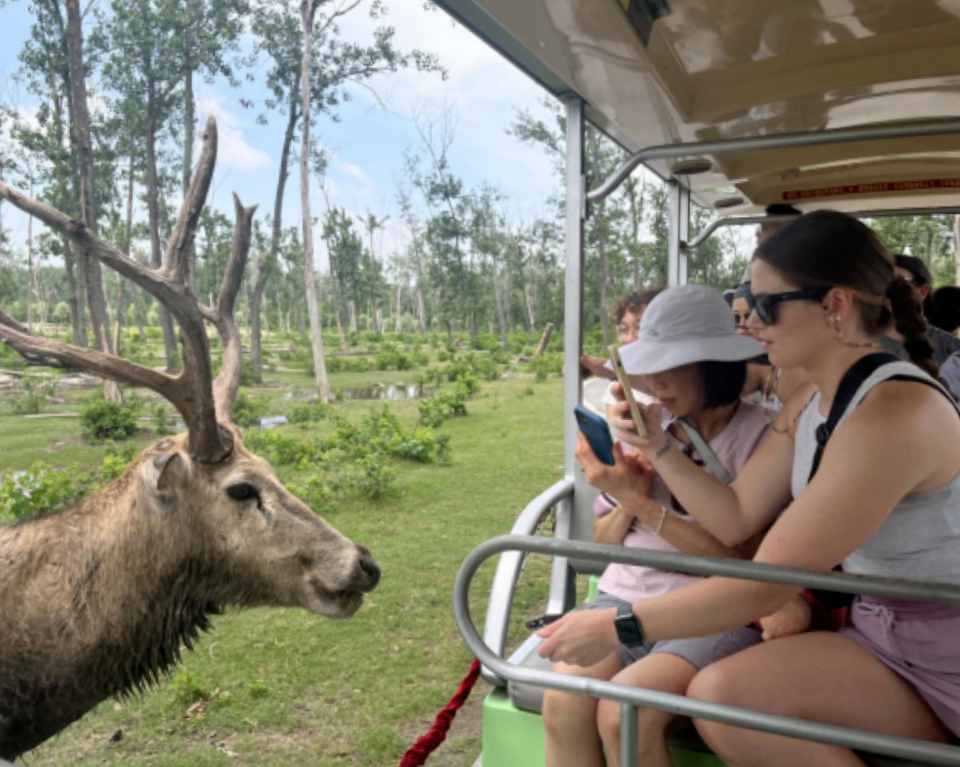
On June 22, a group of 67 teachers and students from Pennsylvania, USA, arrived in Jiangsu to participate in the "Discover Jiangsu: U.S. Youth Exchange Camp". As they stepped into the Yellow Sea Wetlands in Yancheng, they were awe-struck by this pristine ecological sanctuary. From the majestic sight of Père David's deer galloping through the surf to the graceful dance of red-crowned cranes unfurling their snowy wings, American youth held their breath in wonder and eagerly captured the spectacle of untamed life through their lenses.
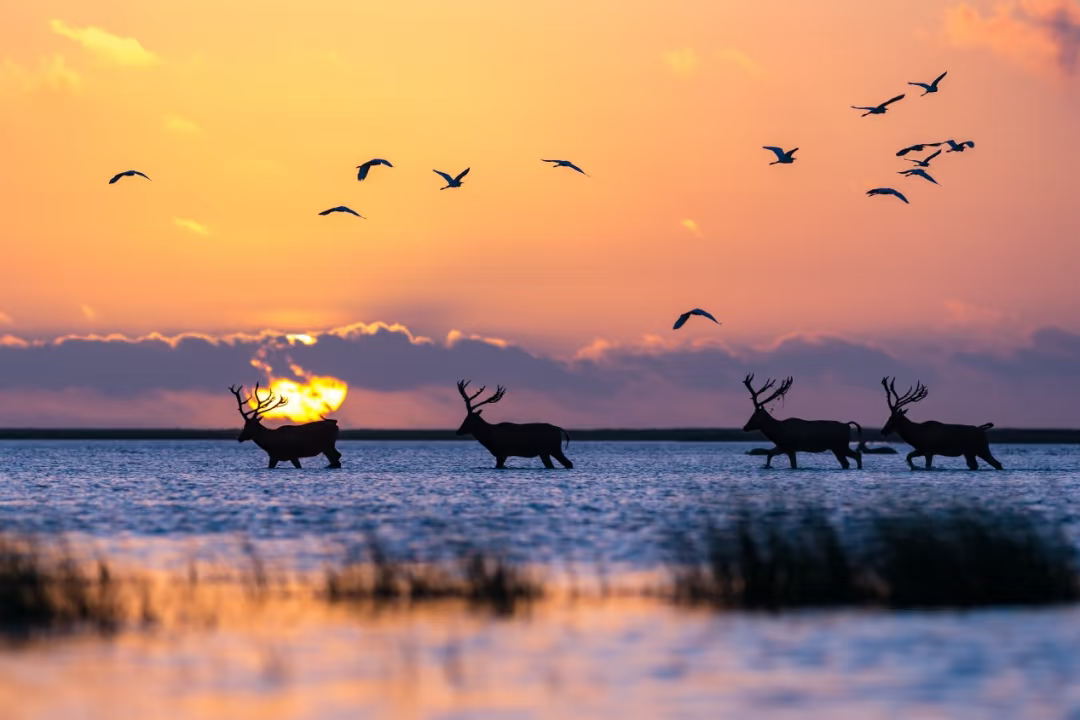
Stretching along Jiangsu's vast coastline, the Yellow Sea Wetlands of Yancheng glisten like a jade gem inlaid on the western Pacific rim. In 2019, the Chinese Yellow Sea(Bohai) Migratory Bird Habitat (Phase I) was inscribed on the UNESCO World Heritage List, marking the world's first coastal wetland heritage site focused on migratory bird conservation. Covering an area of 1,886 square kilometers, this ecological haven is celebrated as a “biodiversity treasure trove”, embodying the Chinese philosophy of harmonious coexistence between humanity and nature.
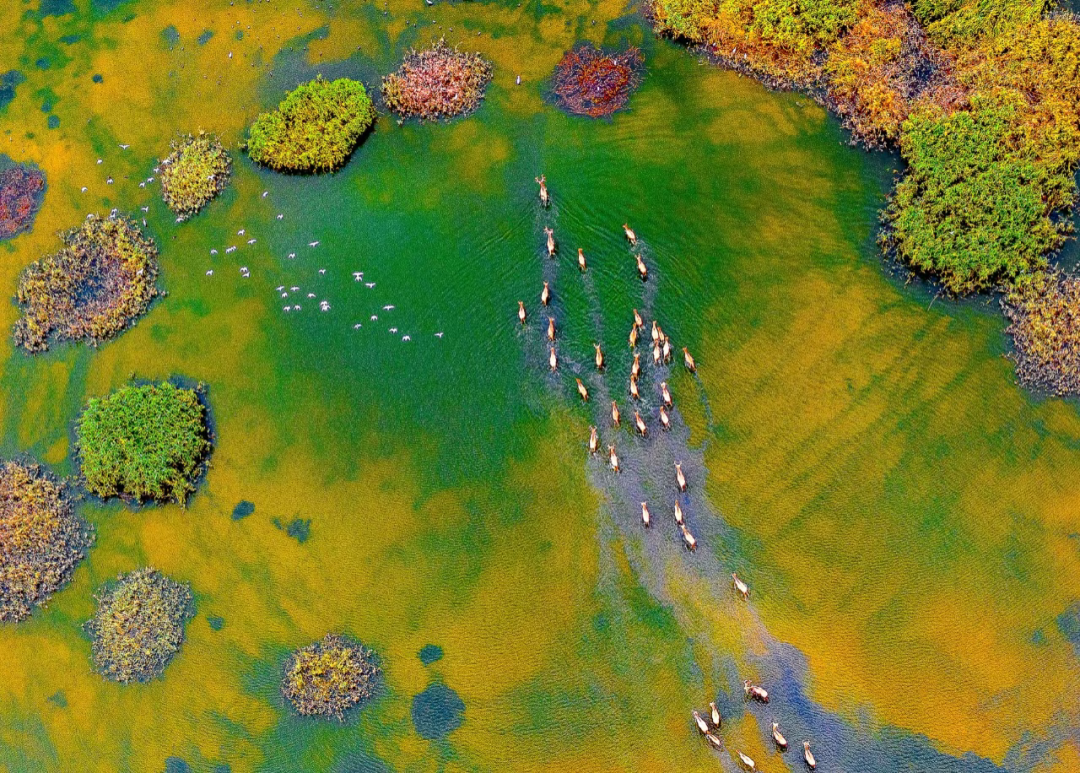

Nature's Marvel
The Yellow Sea Wetlands boast the world's largest tidal flat ecosystem, where the unique topography creates a surreal "underwater forest" landscape. Home to over 410 bird species, among which 17 species such as the red-crowned crane and the spoon-billed sandpiper are listed as globally endangered species, this area welcomes more than 3 million migratory birds annually, earning it the title of "International Airport for Birds". The wetlands absorb millions of tons of CO₂ each year, serving as a natural barrier against storm surges. The soil here also preserves records of climatic shifts over hundreds of thousands of years, offering a "living archive" for climate research.
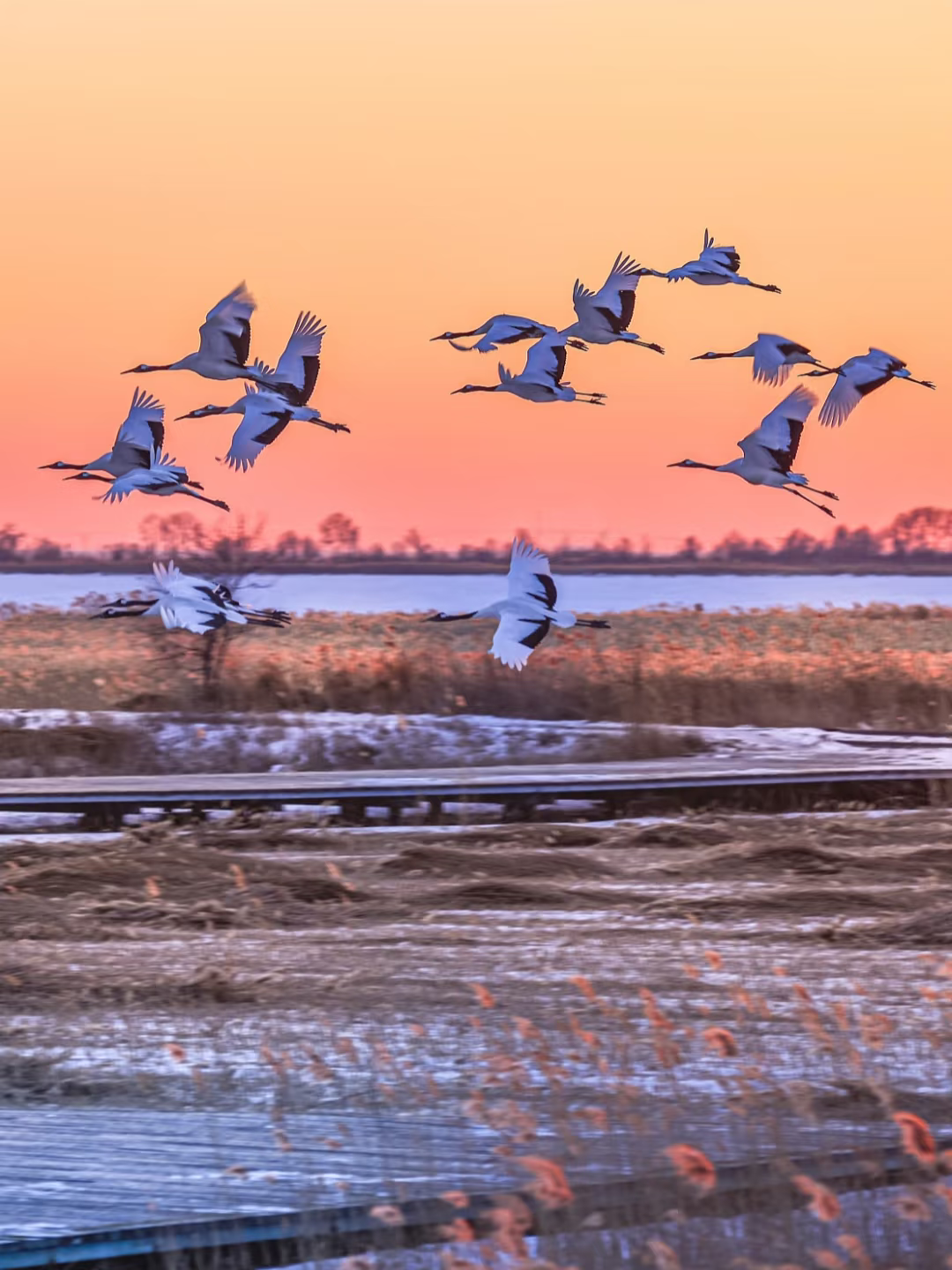
Cultural Footprints
More than a natural spectacle, the Yellow Sea Wetlands are a testament to Yancheng's ecological heritage—one of living by the sea and taking only what is sustainable. Since the Western Han Dynasty, Yancheng has been famed for"boiling seawater for salt." Ancient salt fields and the intangible heritage of Huai salt-making techniques stand as relics of humanity's early ecological wisdom. Local folk arts, such as farmers’ paintings and paper cuttings themed on wetlands, transform ecological beauty into cultural icons. This model of "human-bird-sea" symbiosis complements other Jiangsu cultural icons, such as the harmony of Suzhou gardens and the refined elegance of Yangzhou jasmine.
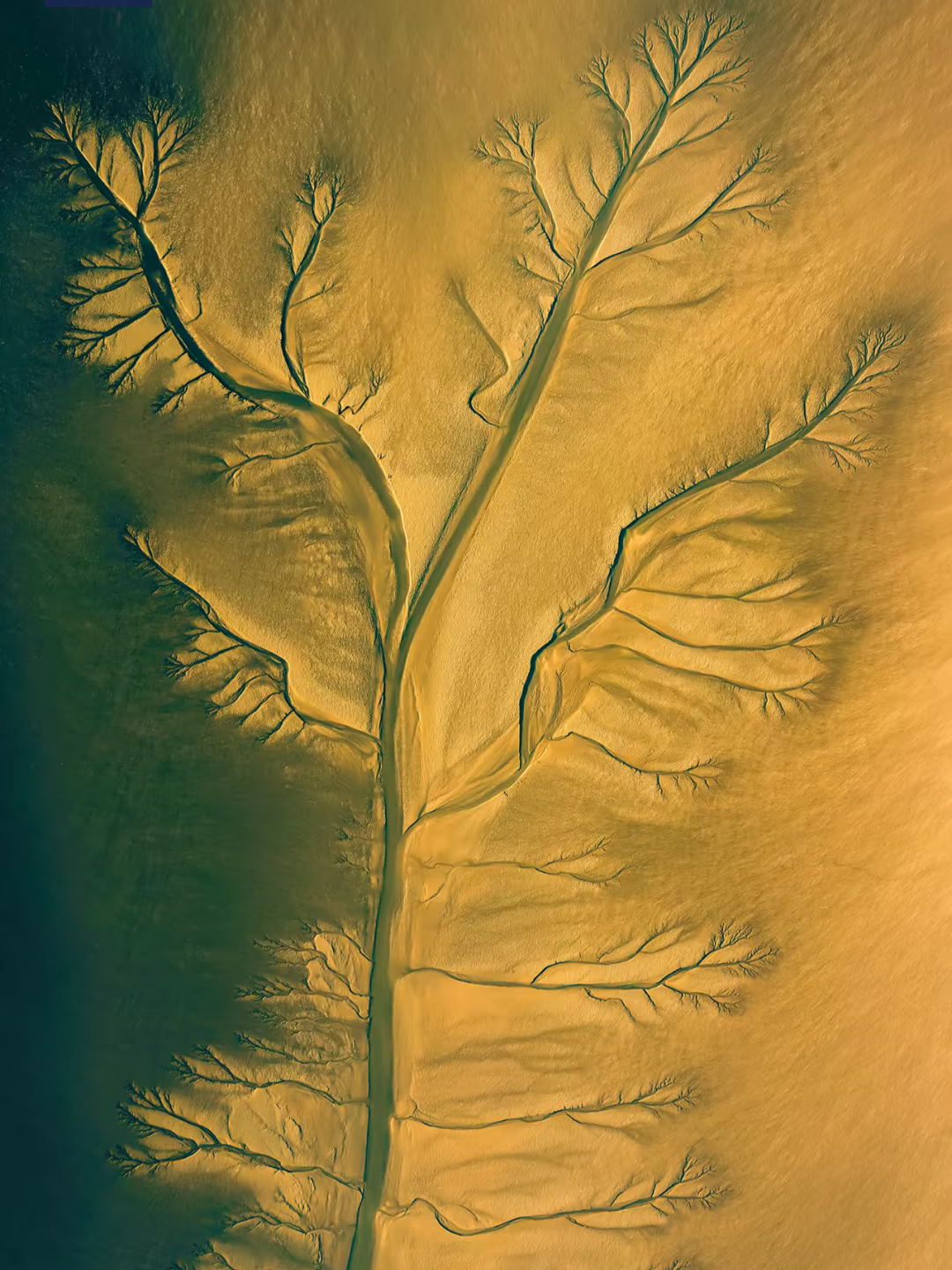
A Global Conversation
Yancheng is using wetland conservation as a bridge for global dialogue on ecological civilization. The 2019 World Heritage designation filled a global gap in coastal wetland heritage and aligned China's conservation standards with international frameworks. In 2023, the first Global Coastal Forum issued the "Yancheng Declaration". The city's pioneering Nature-based Solutions (NbS) model has been promoted across ASEAN and Africa to guide ecological restoration. The Yellow Sea Wetlands have become a "green calling card" for Jiangsu's role in global environmental governance.
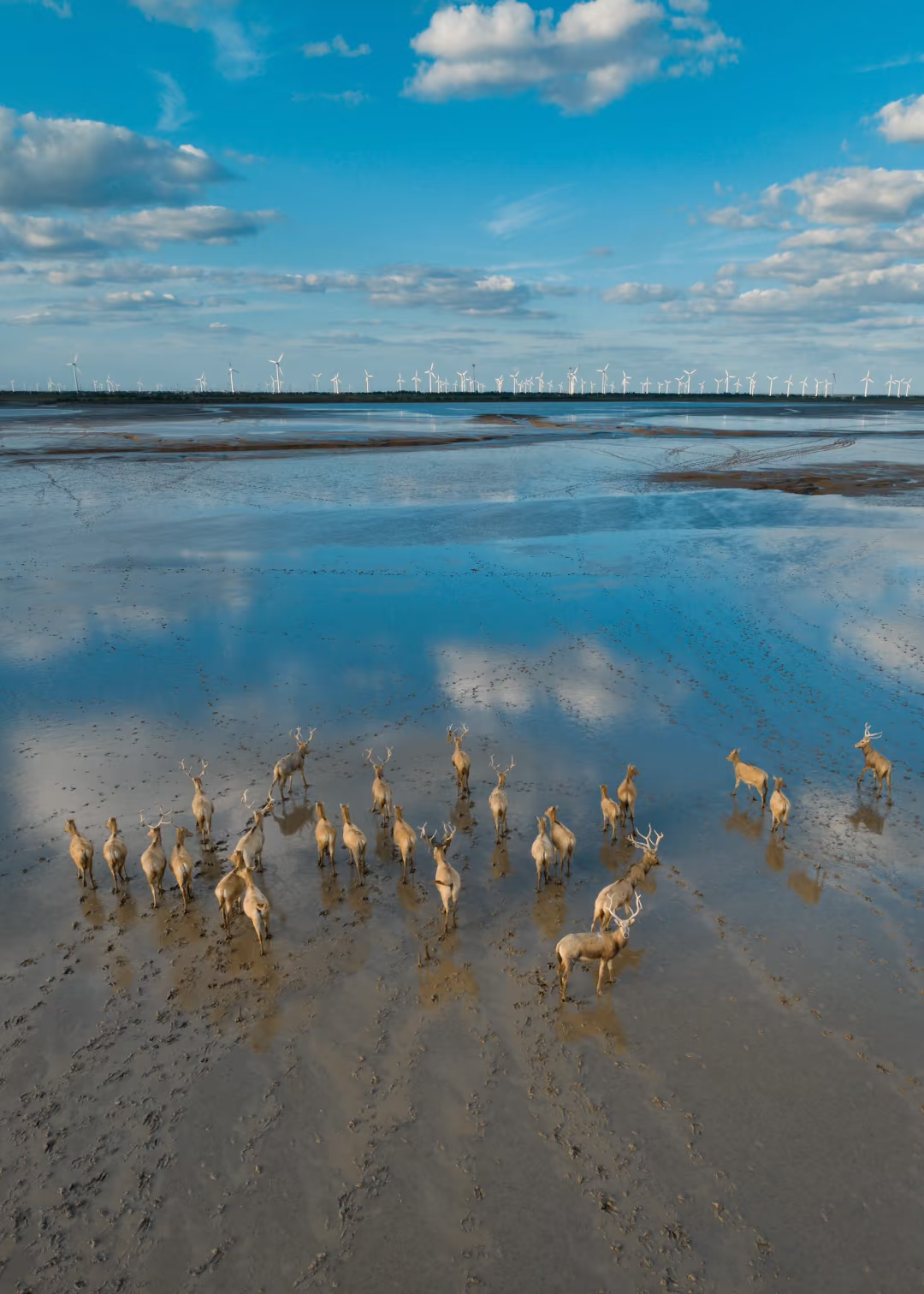
Looking Ahead
Today, Yancheng is pursuing a path that balances ecological protection with high-quality development. Programs such as "returning fishponds to wetlands" and "habitat optimization for birds" have expanded wetland coverage by 20% over the past decade. The city is advancing green industries like birdwatching tourism and carbon trading. Leveraging satellite remote sensing and AI recognition technologies to monitor bird migrations, Yancheng has built one of China's most advanced "smart wetland" monitoring platforms.


访客通道(项目入口)
还没有账号?
立即注册